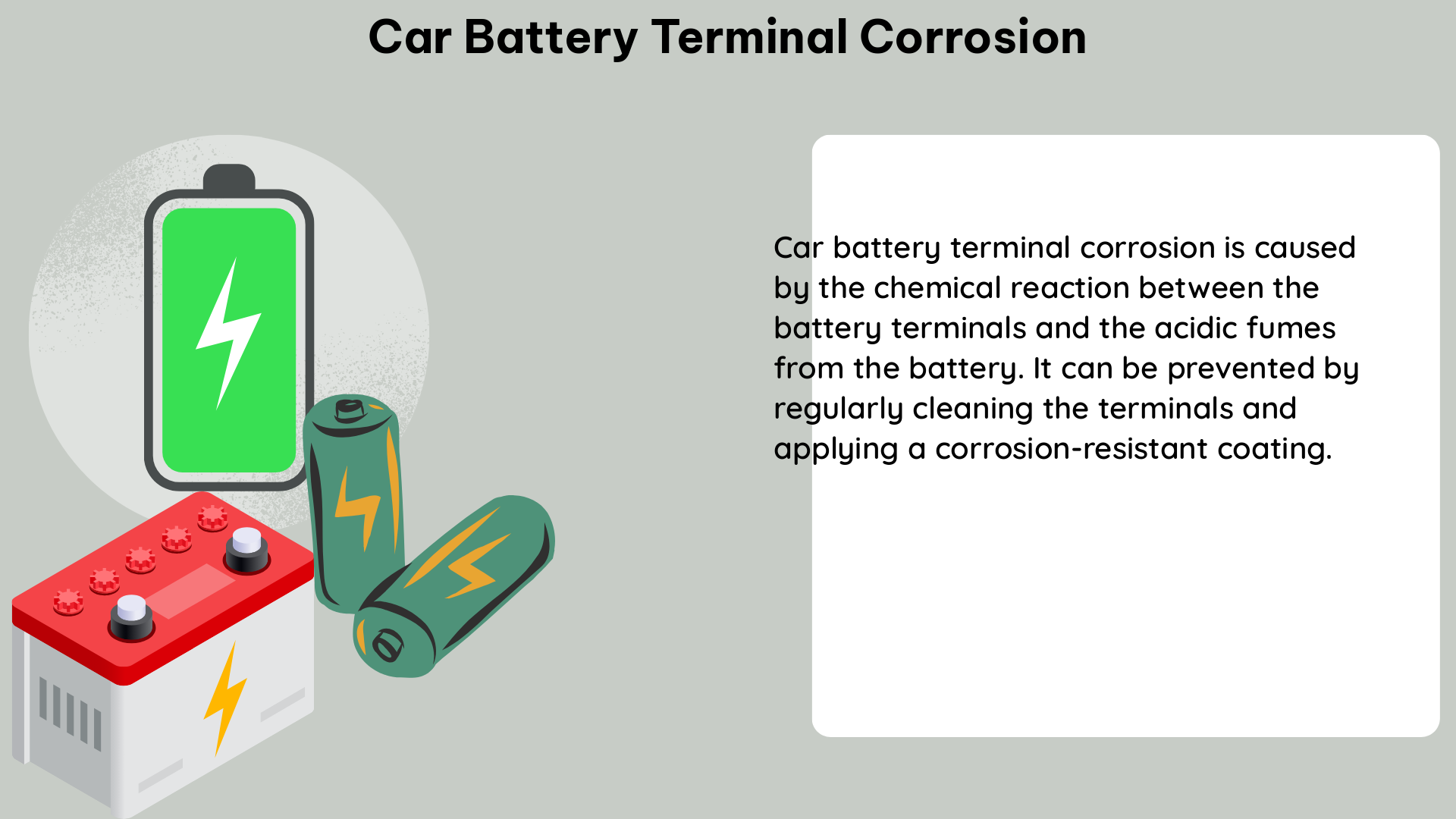Car battery terminal corrosion is a common issue that can lead to increased resistance within the electrical circuit, disrupting the flow of current and potentially causing significant problems, such as preventing the car from starting or damaging various components like the vehicle chassis, electrical wiring, and air conditioner lines. The corrosion appears as a white, green, or bluish substance on the battery posts, terminals, or cables, primarily caused by the release of hydrogen gas from the sulfuric acid inside the battery interacting with the surrounding atmosphere.
Understanding the Measurable Impact of Car Battery Terminal Corrosion
-
Resistance Increase: Corrosion can lead to a 10-20 ohm increase in resistance, disrupting the current flow and potentially causing starting issues. This resistance increase can be measured using a multimeter, with a healthy battery terminal typically exhibiting a resistance of less than 0.5 ohms.
-
Battery Life Reduction: Corrosion can shorten battery life by up to 50% if not addressed promptly. This can be observed through a decrease in the battery’s cranking power, measured in cold cranking amps (CCA), and a reduction in the battery’s overall lifespan.
-
Increased Stress on Starter Motor and Battery: Any amount of corrosion increases resistance, causing more stress on the starter motor and battery, potentially leading to premature failure. This increased stress can be quantified by measuring the current draw of the starter motor during cranking, which should typically be within the manufacturer’s recommended range.
-
Voltage Drop: Corrosion can cause a significant voltage drop across the battery terminals, which can be measured using a multimeter. A healthy battery should have a voltage drop of less than 0.2 volts between the positive and negative terminals under load.
-
Sulfation Buildup: The corrosion process can also lead to the buildup of sulfate crystals on the battery plates, reducing the battery’s ability to accept and hold a charge. This can be measured by testing the battery’s specific gravity using a hydrometer, which should be within the manufacturer’s recommended range.
Cleaning Car Battery Terminal Corrosion: A Step-by-Step Guide

-
Safety First: Wear heavy-duty gloves and eye protection while handling battery corrosion, as the corrosive materials can be hazardous to your health.
-
Disconnect the Battery: Start with the negative terminal, carefully release the cable from the battery, and safely position the cable away from the terminal. Next, remove the positive terminal connection.
-
Inspect the Battery Cables: Check for fraying or corrosion where the cable connects to the terminal and replace any damaged cables. Measure the resistance of the cables using a multimeter, which should be less than 0.5 ohms.
-
Remove the Battery from the Vehicle: Place the battery in a shallow bucket or pan to collect the corrosive material, ensuring proper containment and disposal.
-
Start Cleaning: Use a wire brush or scraper to remove any solid, powdery corrosion from around the terminals and dirt from the top of the battery casing. Measure the resistance between the positive and negative terminals, which should be less than 0.5 ohms.
-
Neutralize: Use a battery terminal cleaner or a solution of baking soda and warm water to neutralize and remove the remaining corrosion. Measure the pH of the solution, which should be between 7.0 and 8.0 for optimal neutralization.
-
Rinse and Dry: Thoroughly rinse the battery and terminals with clean water, then dry the area completely using a clean, lint-free cloth.
Preventing Recurrence of Car Battery Terminal Corrosion
To prevent the recurrence of car battery terminal corrosion, follow these steps:
-
Apply Protective Coating: After cleaning, coat the terminals with a thin layer of grease or high-pressure grease to keep lead, escaped hydrogen gas, and oxygen from mixing, which forms the corrosion. Measure the thickness of the coating using a micrometer, which should be between 0.5 and 1.0 millimeters.
-
Regular Maintenance: Perform regular cleaning and reapplication of the protective coating every six months to maintain optimal battery performance and prevent corrosion buildup. Measure the battery’s state of charge using a voltmeter, which should be between 12.6 and 12.8 volts for a fully charged battery.
-
Monitor Battery Condition: Regularly check the battery’s condition, including its voltage, specific gravity, and cranking power, to identify any issues early on. Use a battery tester to measure the battery’s cold cranking amps (CCA), which should be within the manufacturer’s recommended range.
-
Proper Battery Maintenance: Ensure that the battery is properly secured in the vehicle and that the connections are tight. Avoid overcharging the battery, as this can contribute to the formation of corrosion.
By following these steps and regularly monitoring the condition of your car’s battery terminals, you can effectively identify, clean, and prevent the recurrence of car battery terminal corrosion, ensuring optimal electrical system performance and prolonging the life of your vehicle’s battery.
References:
- Understanding and Addressing Car Battery Corrosion: A Guide to Prevention and Cleaning
- What Causes Battery Terminal Corrosion?
- How Much Corrosion is Too Much Corrosion?
- How to Clean Battery Corrosion and What Causes It
- Battery Terminal Corrosion: Causes, Symptoms, and Solutions

The lambdageeks.com Core SME Team is a group of experienced subject matter experts from diverse scientific and technical fields including Physics, Chemistry, Technology,Electronics & Electrical Engineering, Automotive, Mechanical Engineering. Our team collaborates to create high-quality, well-researched articles on a wide range of science and technology topics for the lambdageeks.com website.
All Our Senior SME are having more than 7 Years of experience in the respective fields . They are either Working Industry Professionals or assocaited With different Universities. Refer Our Authors Page to get to know About our Core SMEs.